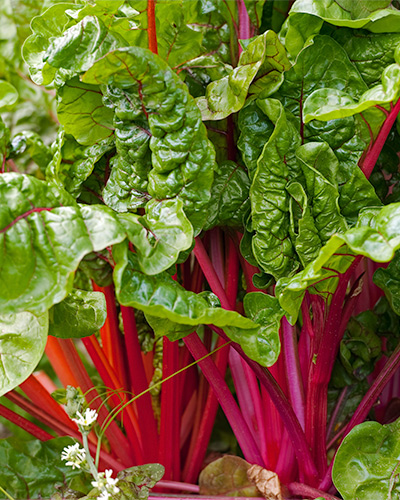GardenZeus Quick Tips: Problems and Non-Problems with Chard

Chard is a relatively easy vegetable that offers abundant yields, and is one of the most consistently productive greens during warm weather. A potentially long-lived biennial, especially in seasonally mild areas of California, some varieties of chard can be harvested continually for 1 to 2 years after reaching maturity and before bolting. Chard is grown as an annual in cold-winter and extremely-hot-summer California areas.
Common Problems:
Bolting: Bolting is most common in chard after frosts, hot weather, or periods of soil dryness. Try cutting off flower stalks to extend harvest of leaves by 10 days to several weeks.
Chard is also frequently prone to chlorosis, nitrogen deficiency, and shallow rooting. See The GardenZeus Guide to What Commonly Goes Wrong with Vegetable Plants in California Gardens for information about these and other common issues that may affect your chard.
Not Necessarily a Problem:
Garden pests: Chard is a favorite of many garden pests, especially when leaves are young and tender. You may find that chard leaves tend to be mildly-to-severely bug-eaten by the time you’re ready to harvest, especially during warm-to-hot weather. For GardenZeus expert Darren Butler’s meditation about eating leaves that are preapproved by gastropods and the insect kingdom see How Squeamish Are You About Bugbitten Greens?
Don’t know your GardenZeus zone? Click here.
Other articles of interest:
Advanced Tips for Growing Chard Over Winter With Minimal Effort
Chard: An Ideal Container Plant for Southern California and Other Mild Winter Areas
Garden Oatmeal: An Overabundance of Kale and Chard